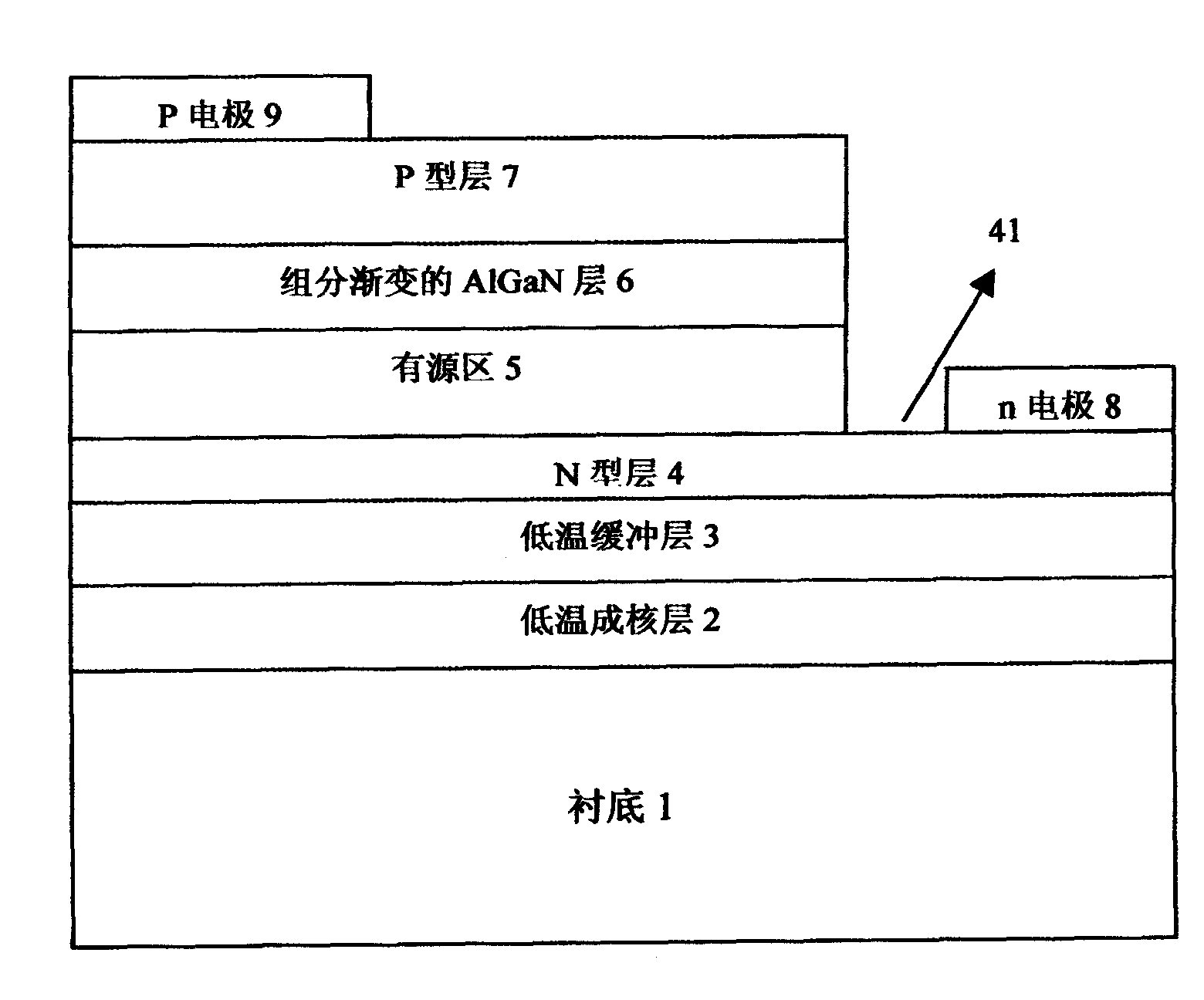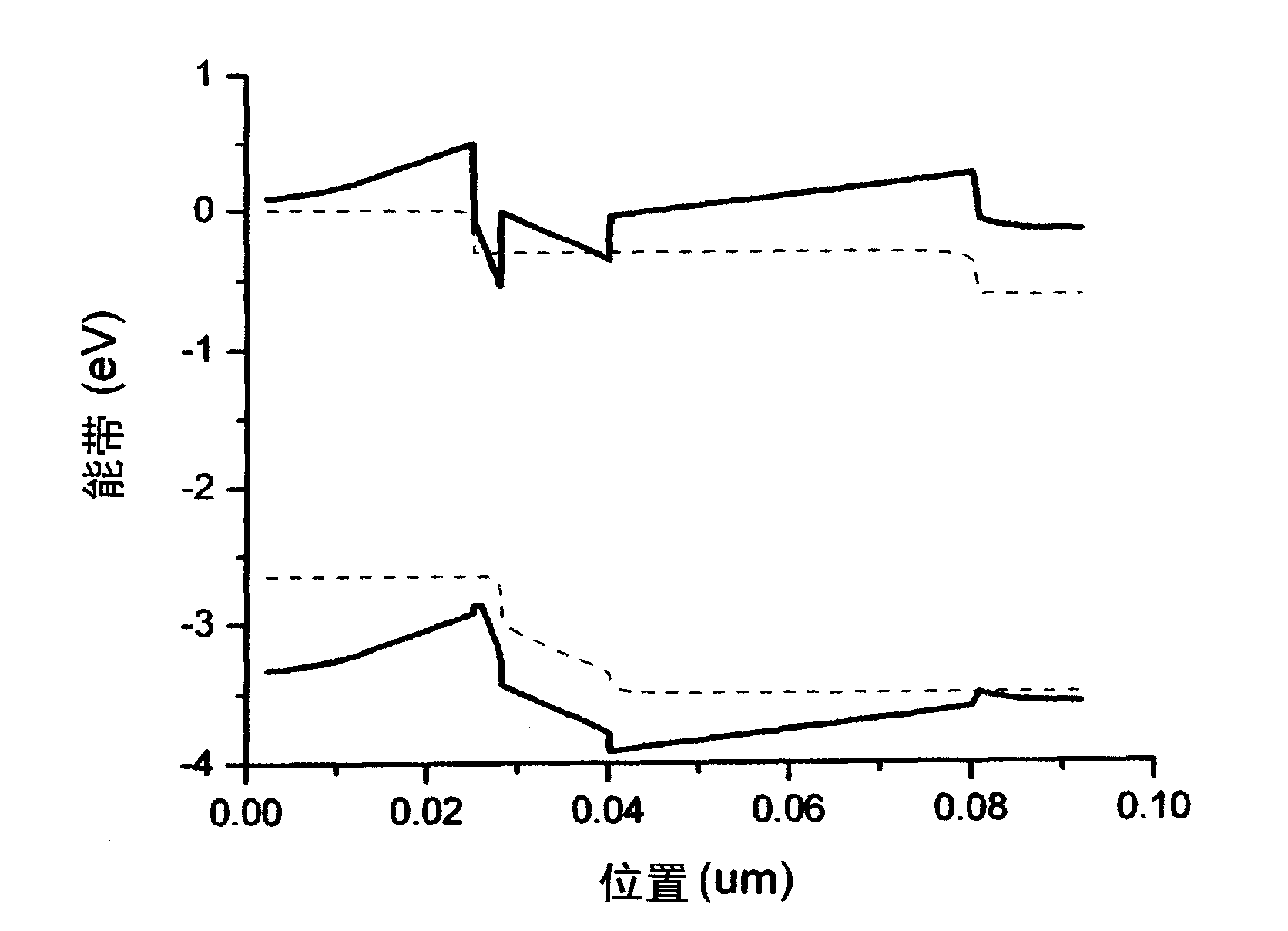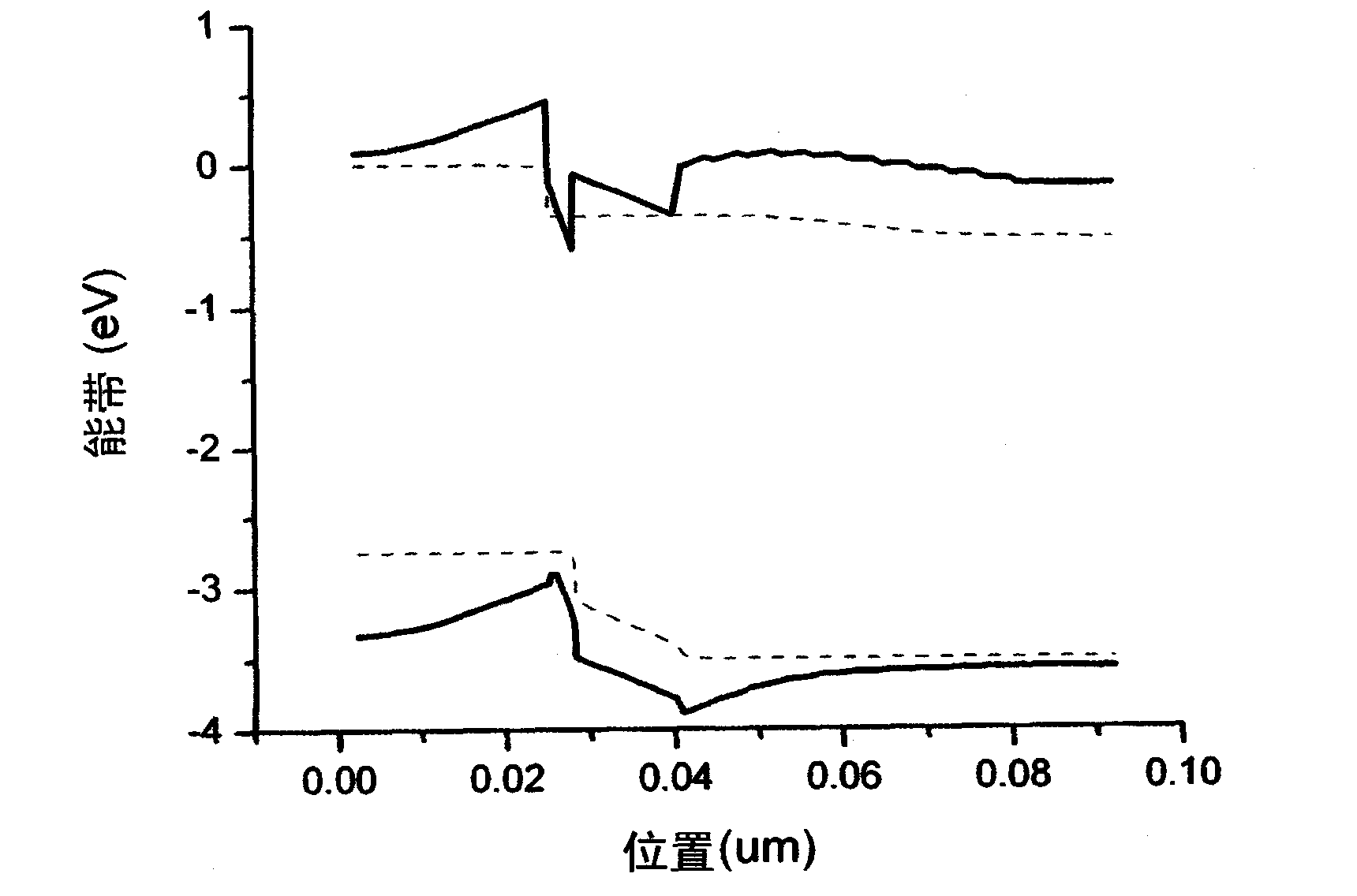Method for improving LED luminous efficiency by using three-dimensional polarized induction positive hole gas
A technology of polarization induction and luminous efficiency, which can be used in electrical components, circuits, semiconductor devices, etc., and can solve problems such as the difficulty of GaN on the N-polar plane
- Summary
- Abstract
- Description
- Claims
- Application Information
AI Technical Summary
Problems solved by technology
Method used
Image
Examples
Embodiment Construction
[0023] see figure 1 As shown, the present invention provides a method for improving LED luminous efficiency by utilizing three-dimensional polarization-induced hole gas, comprising the following steps:
[0024] Step 1: Select a substrate 1, the substrate 1 is a sapphire substrate, a silicon substrate or a silicon carbide substrate;
[0025] Step 2: growing a low-temperature nucleation layer 2, a low-temperature buffer layer 3, a high-temperature n-type layer 4, an active region 5, a wide bandgap barrier layer 6, and a p-type layer 7 sequentially on the substrate 1 to form an epitaxial wafer; wherein The high-temperature n-type layer 4 is doped with Si, its growth temperature is 800-1200°C, and its thickness is 0.1-0.3um; the active region 5 is a double heterojunction structure, a single quantum well structure or a multi-quantum well structure , the number of multiple quantum wells is 1-15, the thickness of the well is 2-3nm, and the thickness of the barrier layer is 5-12nm; w...
PUM
 Login to View More
Login to View More Abstract
Description
Claims
Application Information
 Login to View More
Login to View More - R&D
- Intellectual Property
- Life Sciences
- Materials
- Tech Scout
- Unparalleled Data Quality
- Higher Quality Content
- 60% Fewer Hallucinations
Browse by: Latest US Patents, China's latest patents, Technical Efficacy Thesaurus, Application Domain, Technology Topic, Popular Technical Reports.
© 2025 PatSnap. All rights reserved.Legal|Privacy policy|Modern Slavery Act Transparency Statement|Sitemap|About US| Contact US: help@patsnap.com



